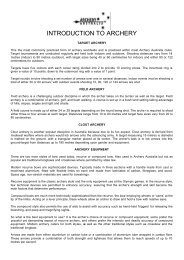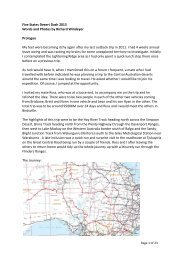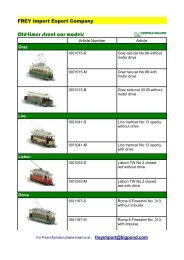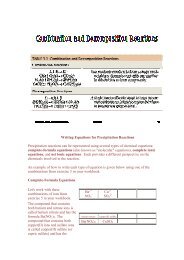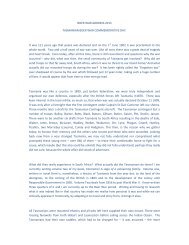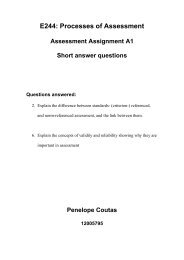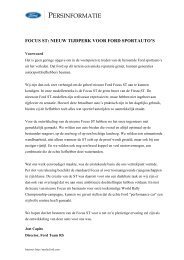TREATING ACIDITY IN COAL PIT LAKES USING SEWAGE AND ...
TREATING ACIDITY IN COAL PIT LAKES USING SEWAGE AND ...
TREATING ACIDITY IN COAL PIT LAKES USING SEWAGE AND ...
You also want an ePaper? Increase the reach of your titles
YUMPU automatically turns print PDFs into web optimized ePapers that Google loves.
Treating acidity in pit lakes using sewage and greenwaste<br />
Ammonia and NOx (nitrate and nitrite) anions were analysed on an auto-analyser using the<br />
Berthelot and persulfate digestion methods respectively, with subtraction (APHA, 1998).<br />
Primary treated municipal sewage was collected from drying beds of the Collinsville Water<br />
Treatment Plant. Due to a very low output from the plant, this material had been dried for<br />
around 12 weeks and was thus of an extremely low water content (specific<br />
density = 1.35 kg/L). A sample from this sewage was taken for analysis.<br />
Green waste (specific density = 1.2 kg/L) was collected from the Collinsville green waste tip.<br />
This material was largely representative of Australian garden waste and included lawn<br />
clippings, palm fronds and other leafy and woody material. Green waste was chopped into<br />
approximately 50 mm sections to fit into the cores. A representative sample of green waste<br />
was prepared in Perth (where the chemical analysis was conducted) from similar local plants<br />
and was dried at 25 o C for one week to simulate ambient conditions at Collinsville municipal<br />
green waste dump. The sewage and green waste samples were then analysed for total<br />
nitrogen, total phosphorus and total organic carbon content as well as for dissolved heavy<br />
metals<br />
6.3 Results<br />
Garrick East pit lake had a very low pH and high total iron concentrations indicative of an<br />
iron buffered system (Table 6.2), with heavy metals at environmentally toxic concentrations<br />
(ANZECC/ARMCANZ, 2000b). Nutrient levels were also very low in this pit lake;<br />
especially for phosphorus as is typical of AMD waters (Lessmann et al., 2000; Borg & Holm,<br />
2001).<br />
Collinsville sewage sludge was high in sulfur (10 g kg -1 ) and also contained notable levels of<br />
aluminium (17 g kg -1 ), iron, calcium and magnesium. However, concentrations of some<br />
heavy metals including zinc (1,500 mg kg -1 ) and nickel (39 mg kg -1 ) were also surprisingly<br />
high. S was moderately high in nitrogen (31 mg kg -1 ) and phosphorus (12 mg kg -1 ), had<br />
26



